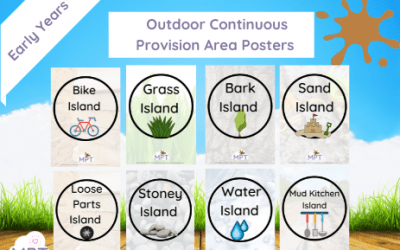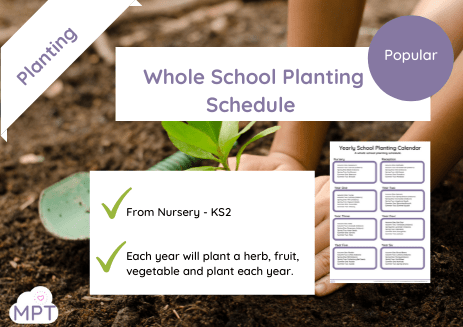Try some of our resources for Free. Sign up to our free outdoor learning membership here.
Outdoor Continuous Provision Area Posters
Mar 18, 2022
Wow! Let us help you organise your outdoor area with these amazing downloadable posters. Laminate and display outside...
Subitising Numbers 0-10 (Nature Posters)
Mar 17, 2022
Use a bit of muddy inspiration and take some of your posters outside! Subitising Numbers 0-10 (Nature Posters) will...
How to make a Nature Caterpillar (Tuff Spot)
Mar 7, 2022
Such a simple but much-loved activity. Children follow the instructions as they make their very own Nature...
Nature Shapes (Tuff Spot Matt)
Mar 3, 2022
Use our Lead Dominoes to play Dominoes the natural way, perfect for early years outdoor activities and outdoor...
(FREEBIE) Leaf Dominoes
Feb 15, 2022
Fancy a game of Leaf Dominoes? Use real leaves to have fun subatising and learning more about numbers. Works well in...
Pebble Dominoes
Feb 15, 2022
Fancy a game of pebble Dominoes anyone? This fun and interactive game will help children gain sensory experiences...
Whole School Yearly Planting Calendar
Feb 10, 2022
Make a Nature Heart
Feb 9, 2022
How to make a Flower Press (Home Learning)
Feb 8, 2022
Design a Wellington Boot
Jan 27, 2022
Design a wellington Boot, Use natural resources Get wellies in and decorate them, link it to DT and Science
The Muddy Puddle Teacher Book | Early Years Outdoors
Jan 21, 2022
Buy the Book The Muddy Puddle Teacher Book: A Revolution in Outdoor Learning The Muddy Puddle Teacher book is a...
Muddy Fingers (Fine Motor Scheme of Work)
Dec 20, 2021
Muddy Fingers (Fine Motor Scheme of Work) can be done inside or out but does use natural resources. Every half term...
What children should wear in winter
Dec 1, 2021
As the Norweigian's say - "There's no such thing as bad weather, only bad clothes" Going outside in all weathers...
Children In Need : The Mad Cash Dash
Nov 17, 2021
Children In Need : The Mad Cash Dash This is a great event to also do as a whole school and add an element of...
Mud Kitchen: Spring Silly Soup Range
Sep 10, 2021
Mud Kitchen: Spring Silly Soup Range ⇒Use the Mud Kitchen: Spring Soup from the Silly Soup range to help implement a...
Mud Kitchen: Happy Herb Silly Soup
Sep 10, 2021
Mud Kitchen: Happy Herbs Silly Soup Range ⇒Use the Mud Kitchen: Happy Herbs Soup from the Silly Soup range to help...
Muddy Kitchen: Marvellous Mud Soup Range
Sep 10, 2021
The Benefits of Mud Kitchens: Unleashing Creativity and Learning in Children Mud kitchens have become a popular...
New In

10 Outdoor VE Ideas – KS1

10 Outdoor Ideas for VE Day – EYFS

100 Outdoor Learning Ideas

Year 1 Punctuation (Rope Method)

Nature Flash Cards (Outdoor Learning) – Non-Verbal Cue Cards

Outdoor Learning I Spy & Talk

Environment Science Project

Outdoor Learning Emotions Intervention

Earth Day Invention




















